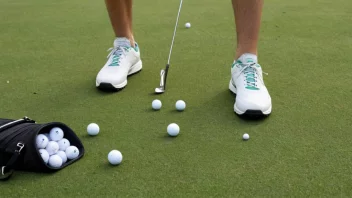In the fast-paced world of motorsports, every moment counts. However, there are times when drivers and teams find themselves with unexpected downtime, whether due to weather conditions, mechanical issues, or other delays. Instead of viewing these moments as setbacks, athletes can leverage this time to enhance their training and improve performance. Here are some effective strategies to utilize downtime wisely, ensuring that every second spent off the track contributes to overall growth.
1. Mental Conditioning
Downtime is an excellent opportunity for mental training. Motorsport is as much a mental game as it is physical. Engage in visualization exercises where you mentally rehearse your laps, focusing on every turn and your racing lines. Consider the following techniques:
- Visualization: Picture yourself successfully navigating a challenging course.
- Mindfulness: Practice breathing exercises to enhance focus and reduce anxiety.
- Strategy Review: Analyze previous races, pinpointing areas for improvement.
2. Strength and Conditioning Workouts
While you may not be on the track, your body can still benefit from physical training. Use your downtime for strength and conditioning workouts that enhance your racing performance. Consider these options:
- Core Stability: Engage in exercises like planks and Russian twists to improve your overall control and stability in the car.
- Endurance Training: Incorporate cardio activities like running or cycling to build stamina.
- Flexibility Exercises: Stretching and yoga can improve your range of motion, vital for quick maneuvers during a race.
3. Technical Skills Development
Downtime is a perfect chance to enhance your technical skills. This includes studying data, improving your understanding of vehicle dynamics, and working on your reaction times. Consider the following:
- Data Analysis: Review telemetry data from previous races to identify performance patterns and areas for improvement.
- Simulators: Use racing simulators to practice your skills in a controlled environment, honing your reflexes and decision-making.
- Vehicle Familiarization: Spend time understanding the mechanics of your vehicle. Knowledge of your car can lead to better performance during races.
4. Team Collaboration and Communication
Use downtime to strengthen your relationship with your team. Effective communication can significantly impact race outcomes. Here are ways to enhance teamwork:
- Debrief Sessions: Hold meetings with your crew to discuss strategies, performance, and necessary adjustments.
- Team Bonding Activities: Engage in team-building exercises that foster trust and cooperation.
- Role Understanding: Clarify each team member's role and responsibilities to ensure smooth operations during races.
5. Review and Plan
Finally, take time to assess your overall training and racing strategies. Reflecting on your progress can help you set clear goals for the future:
- Goal Setting: Establish short-term and long-term goals, ensuring they are specific, measurable, achievable, relevant, and time-bound (SMART).
- Performance Tracking: Maintain a journal of your training and racing experiences to track improvements and setbacks.
- Future Planning: Formulate a plan for upcoming races, incorporating lessons learned from previous experiences.
In conclusion, downtime in motorsport training can be a valuable asset rather than a hindrance. By focusing on mental conditioning, physical training, technical skills development, team collaboration, and careful planning, athletes can turn idle moments into productive sessions that enhance their performance on the track. Embracing these strategies ensures that when the engines roar back to life, you’ll be more prepared than ever to compete at your best.






